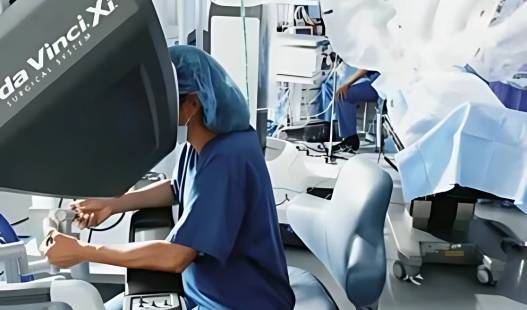One of the most important methods for treating prostate cancer today is robotic prostatectomy. This is a minimally invasive surgical procedure that removes the prostate gland and surrounding tissues with the use of sophisticated robotic equipment. This post is a Complete Guide to Understanding Robotic Prostatectomy, including its definition, benefits, how it works, how to recover, and any possible hazards.
What is a Prostatectomy Robotic?
One kind of surgery used to treat localized prostate cancer is called a robotic prostatectomy. A robotic surgical system, like the da Vinci Surgical System, is used to execute the treatment, enabling surgeons to work with greater precision.
Important Characteristics: Minimally Invasive Small incisions are created as opposed to big ones, resulting in a recuperación más rápida y menos dolor después de la cirugía.
Enhanced Visualization: By giving the surgeon a 3D, high-definition picture of the surgical site, the robotic system enhances their ability to maneuver around intricate anatomical features.
Precision: The robotic arms replicate the natural movement of the human hand with enhanced accuracy, allowing for more dexterity.
Benefits of Prostatectomy Robotic
When contrasted to open surgery, robotic prostatectomy has various benefits.
- Less Blood Loss: During surgery, smaller incisions usually cause less bleeding.
- Shorter Hospital Stay: Following the surgery, the majority of patients are able to return home in one to two days.
- Quicker Recovery: Patients frequently return to their regular activities more quickly since there has been less tissue damage.
- Lower Risk of consequences: Generally speaking, robotic procedures carry a lower risk of consequences, including infection and nerve injury.
The Process of a Robotic Prostatectomy
Usually, the process entails the following steps:
Preoperative Planning Advise: A comprehensive assessment is carried out, comprising imaging studies and blood tests to determine the stage and severity of the malignancy.
Medicine: During the entire procedure, the patient is put under general anesthesia.
Procedures for Surgery
- Incision Creation: The lower abdomen is divided into several tiny incisions, usually five to six.
- Robot Setup: The surgical instruments are attached, and the robotic arms are introduced via these incisions.
- Tissue Dissection: The instruments are gently dissected from surrounding tissues by the surgeon using the robotic console to guide them.
- Prostate Excision: A portion of the surrounding tissue as well as the prostate gland is removed.
- Reconstruction: Urinary continuity is restored when the bladder is reattached to the urethra.
Duration: It usually takes two to four hours to complete the entire process.
Recuperation Following Robotic Prostatectomy
Immediate Postoperative Care: Before being moved to a hospital room, patients are typically observed in a recovery center.
Urine is drained via a catheter, which is inserted and left in place for one to two weeks.
Rehab at Home
Pain control is crucial; patients may need to use prescription drugs to ease their agony. Maintaining a balanced diet and drinking plenty of water are essential for promoting healing.
Follow-up Appointments: Scheduling frequent follow-up visits is crucial for keeping an eye on the healing process and handling any potential issues.
PSA (prostate-specific antigen) tests are commonly used to assess the efficacy of treatment.
Modifications to Lifestyle
It is advised to gradually resume physical activity, with particular limitations placed on heavy lifting and intense workouts for a few weeks.
Given that recuperation timeframes can differ, patients are advised to talk with their doctor about resumed sexual activity.
Possible Hazards and Difficulties
Like any surgical technique, robotic prostatectomy has several possible dangers even though it is generally safe:
- Bleeding: This risk is less frequent than open surgery, but it can nonetheless happen.
- Infection: There is a chance that the urinary system or the surgical site will get infected.
- Particular Complications Urinary Incontinence: Certain patients may have trouble managing their urine.
- Erectile Dysfunction: Although many men see improvement over time, erectile dysfunction can be caused by nerve injury.
- Infertility: The prostate is removed during the treatment, which may have an impact on fertility.
Conclusion
A novel way to treat prostate cancer, robotic prostatectomy has many advantages over conventional surgical techniques. Many patients now prefer it because of its improved precision, shorter recovery time, and least invasive nature.
To find the optimum course of action that is customized to meet the needs of each patient, it is crucial to go over the risks and benefits of each specific treatment with a healthcare professional. Robotic surgery has the potential to further enhance results for people receiving treatment for prostate cancer as technology develops.
It’s me Ainnie Allen, the talented individual behind this captivating blog, is a remarkable young talent at just 25 years old. With an impressive five years of experience in the dynamic world of blogging, I have honed my skills to perfection. My passion for writing and dedication to my craft are evident in every word I pens. Through my blog, I have share my unique insights, knowledge, and experiences with a keen audience, leaving an indelible mark in the blogging community.










